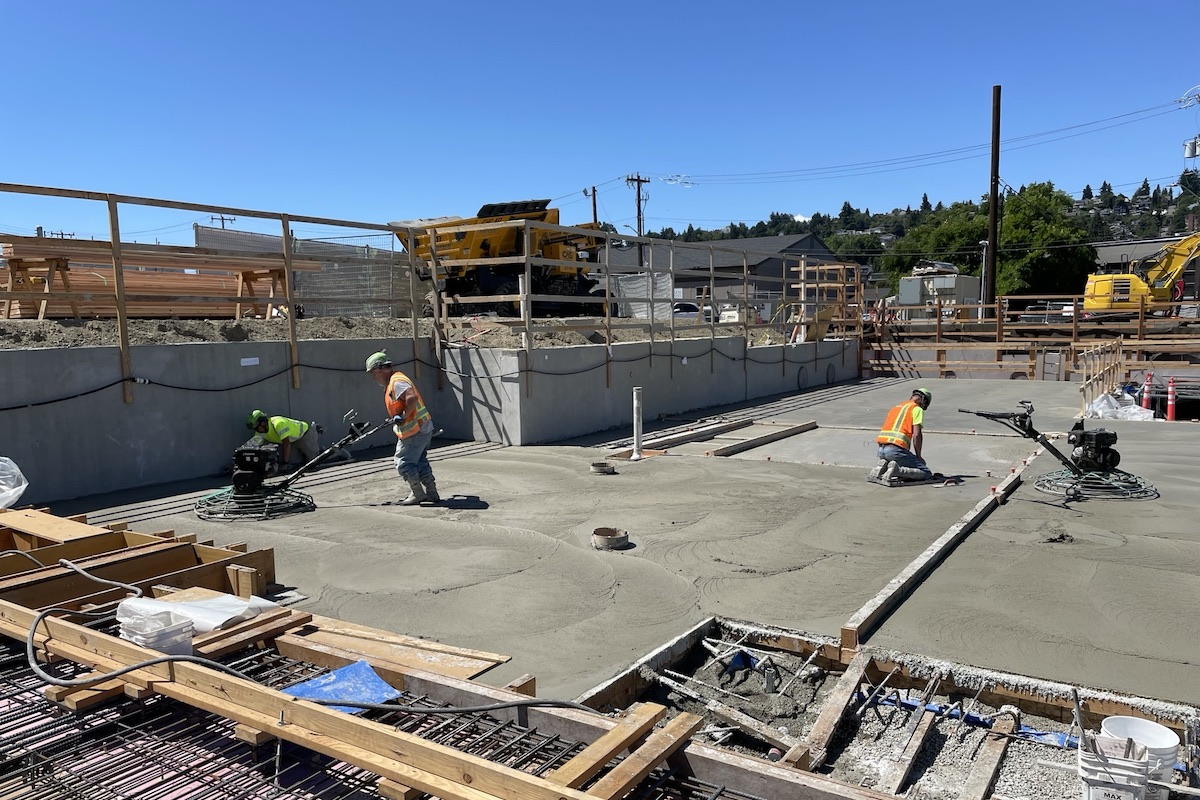Why? Because local access is cut-off during the construction of the high-speed interchange, so Phase 1 and Phase 2 need to be completed to maintain local access. When the three projects are finished, they’ll connect two critical highways and freight interstates.
The project began in 1999 and final design started in the early 2000s. In 2004, funding issues arose, and the projects were put on hold. They were started back up again in 2008 and 2009. At that point, the Jacksonville Road project was added to the scope. The locals wanted an improvement made between the I-80 Local Access Interchange and the I-80 High-Speed Interchange,” says Craig Sattesahn, a Pennsylvania Department of Transportation (PennDOT) District 2 Project Manager. The project was put on hold again in 2010 due to funding issues.
In 2018, the project was taken up again. Funding was jumpstarted with a $35 million INFRA grant - a competitive grant for projects of national or regional significance. The INFRA grant can only be applied to phase one of the projects, which cost $52 million. The rest of the funding comes from additional federal funds and state funds. The remaining two phases are expected to cost approximately $196 million.
During the first phase, the team installed a conventional diamond interchange. It includes a four-span bridge that is 538 feet long. The bridge has three 12-foot lanes with a center turn lane, and two 8-foot shoulders. The first phase also included constructing a half-mile connector road.

| Your local Volvo Construction Equipment dealer |
|---|
| PacWest Machinery |
However, things had changed. Sattesahn notes that a four-inch overlay was missed in the earlier design. Other issues include traffic control. “We needed to maintain two lanes instead of one in each direction on the interstate, which impacted emergency pull-off areas.”
Another change – a point of access study was approved in the early 2000s. However, the Federal Highway Administration wanted a revised study using current traffic data. A key intersection was originally a two-way stop intersection, but it showed it would fail in the future. The team proposed an all-way stop, but it caused issues with construction. Ultimately, the two-way stop was approved.
Finally, stormwater management plans had to be updated. After the project began, the team had to increase the basins to capture more runoff—meeting current design standards. The redesign had to be submitted to authorities for approval.
A separate challenge on the project included dealing with sinkholes, which the area is prone to due to streams and local watersheds, and its limestone soil. The team used wick drains, so the water in the embankment fill gets into the ground rather than pooling. “We put the drains into a drainage blanket at the bottom of the new fill going in and punctured holes in the ground,” Sattesahn says. This allowed for the proper settlement of embankments in just four months rather than the 24-48 months it would have taken otherwise.
Construction on the project officially began in 2020 but started in earnest in 2021. The team managed to finish the project on time despite the challenges. Sattesahn credits the special traffic control phasing, Saturday work, and the contractor (HRI, Inc.) for keeping the project on schedule.

| Your local Somero dealer |
|---|
| American Construction Supply |
HRI is a local contractor that works with PennDOT regularly. They know the area well and enjoy a good working relationship with the state.
“Peter Hall, the Inspector in Charge for PennDOT, led biweekly project control meetings,” Sattesahn says. “The team discussed what HRI had to do over the next two weeks and reviewed progress to make sure the contractor was not falling behind.”
The project is also within 3 percent of the budget, which is deemed acceptable by PennDOT. This is despite the challenges noted above and others. The team had some issues with EPOs (Emergency Pull Off). These are situated every half mile of I-80 and are available if vehicles need to be pulled off the road. This improves safety and helps keep traffic flowing. Other budgetary challenges came from the need for extra materials related to the four-inch overlay.
PennDOT is on to phase two – the Jacksonville Road Betterment. “This project will increase safety,” says Steven Rusnak of PennDOT who is serving as the Design Project Manager. The project will feature drainage improvements, widening of lanes and shoulders, vertical curve corrections to provide adequate sight distances, and updating guide rail to meet PennDOT’s current design standards. The project is set to begin Spring 2024 and complete in Fall 2024.
The final phase will provide new high-speed interchange with free-flow, direct connections between I-80 and I-99 via high-speed ramps, eliminating the need to travel along SR26 to access either highway. The stop-controlled intersections will be eliminated with the project and realigned to service local traffic. Cost estimate is $190 million for this phase and is it is scheduled to bid in the Fall of 2023.

| Your local Superior dealer |
|---|
| Westate Machinery Co |
With phase one complete, the ultimate completion of this key infrastructure project in Central Pennsylvania is finally on the horizon. Upon completion, the project will increase safety, ease congestion, and allow for smoother traffic movements.









































































